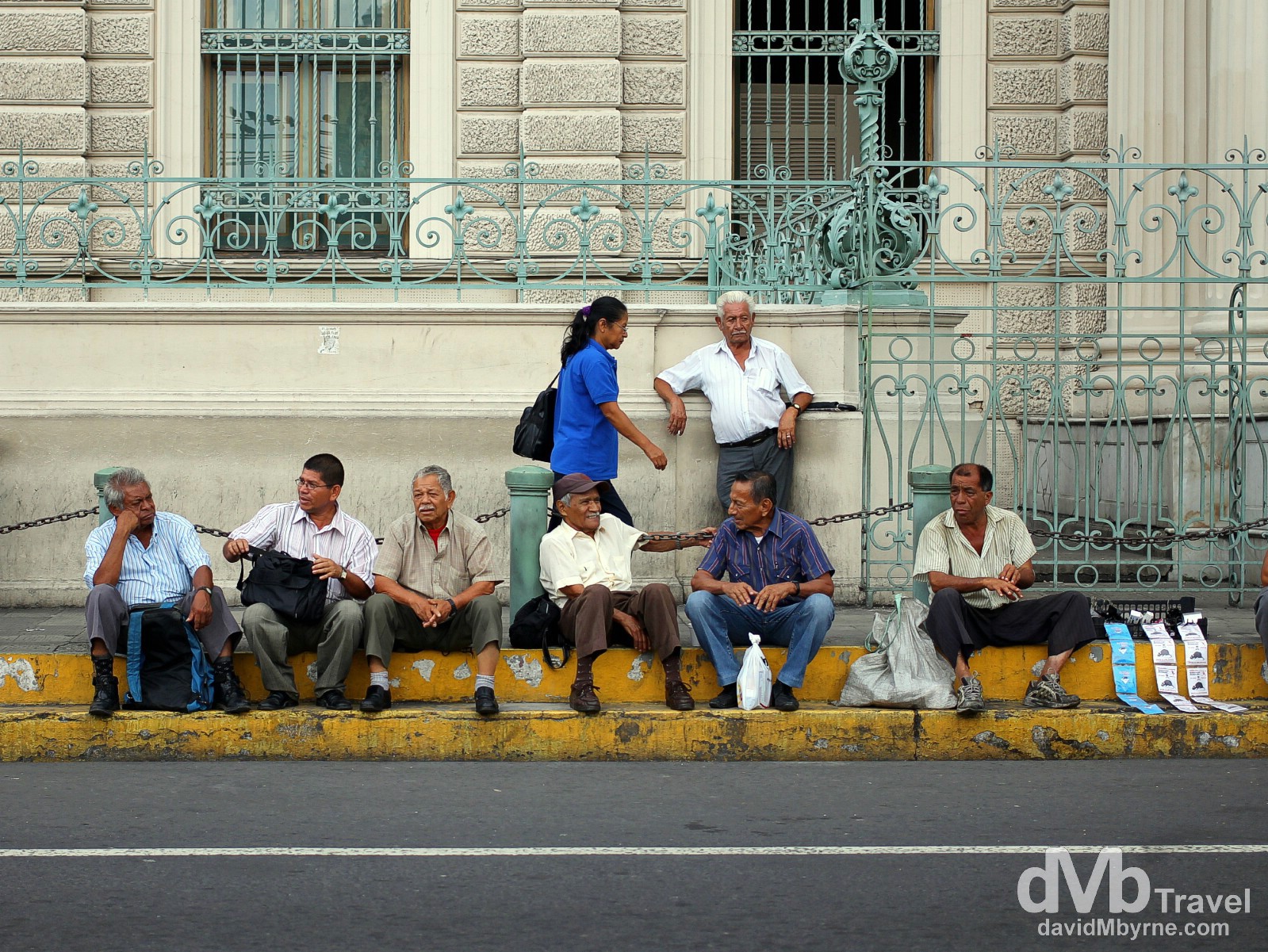Today I took another stroll around San Salvador, El Salvador’s capital & Central America’s second largest city. I got brave, or at least braver than I was yesterday – I did bring a (proper) camera with me. And with little in the way of monuments to admire in the city, I spent my time people watching instead. It was fun.
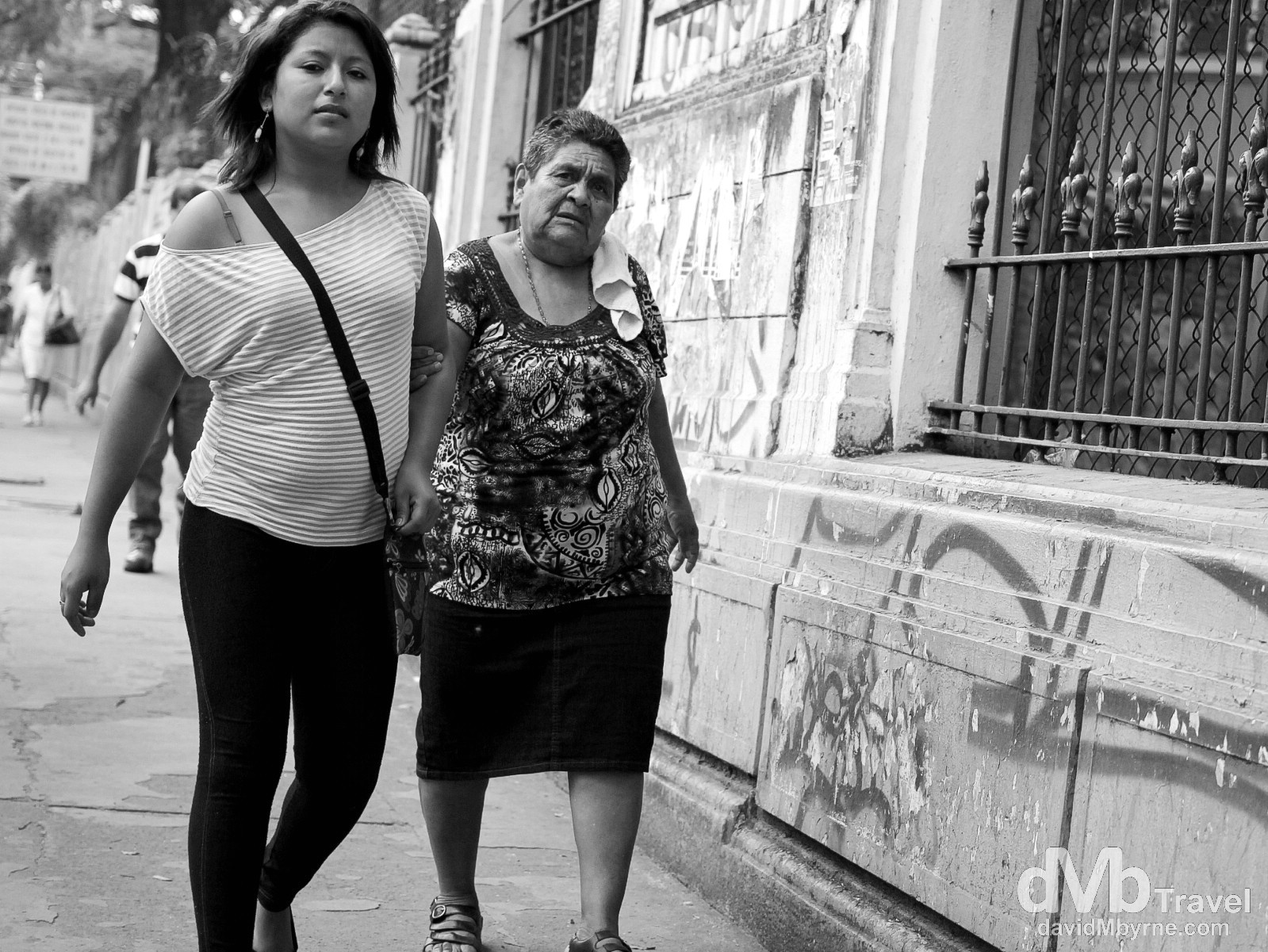
On the streets of San Salvador, El Salvador, Central America. June 3rd 2013.
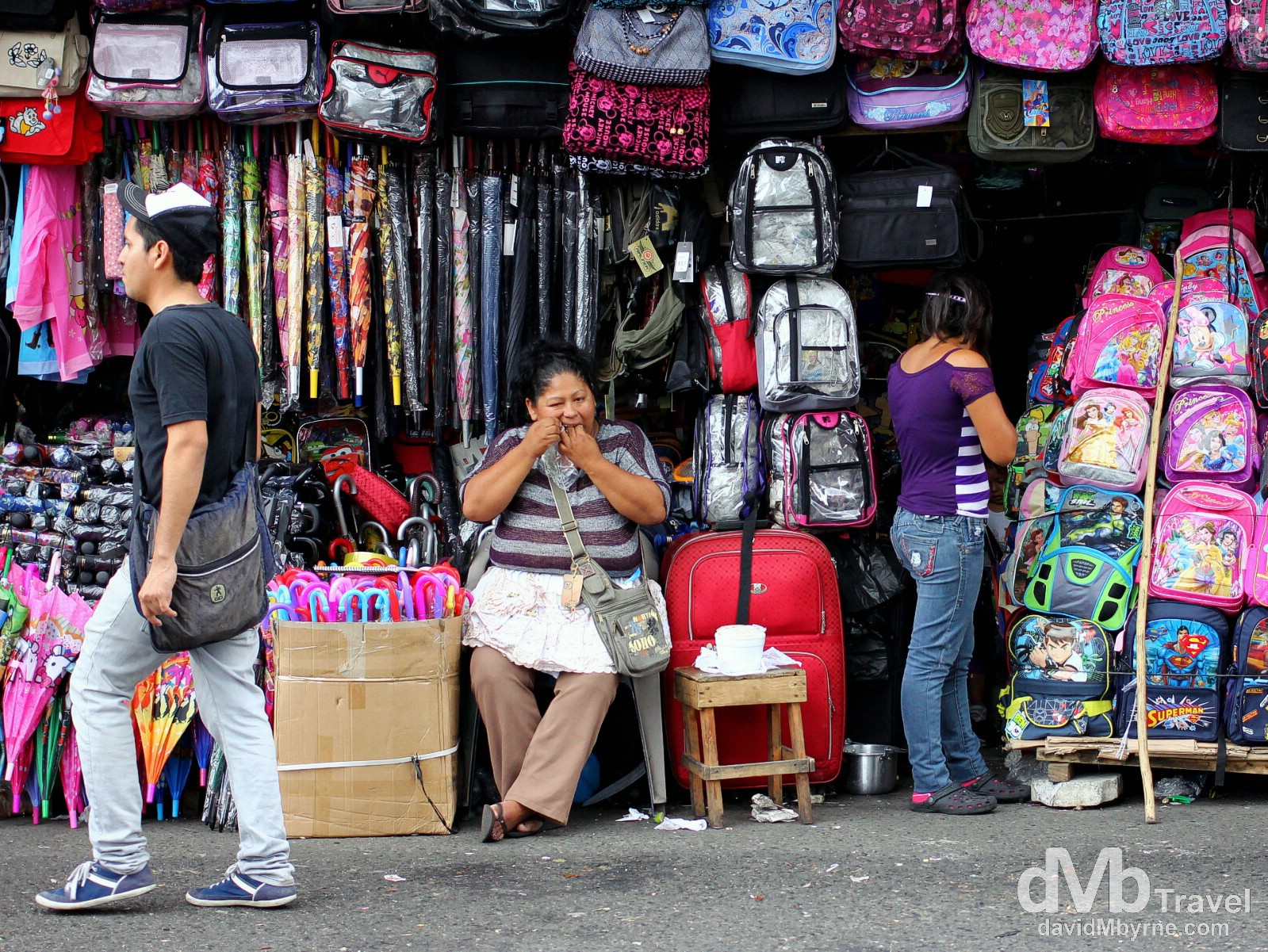
On the streets of San Salvador, El Salvador, Central America. June 3rd 2013.
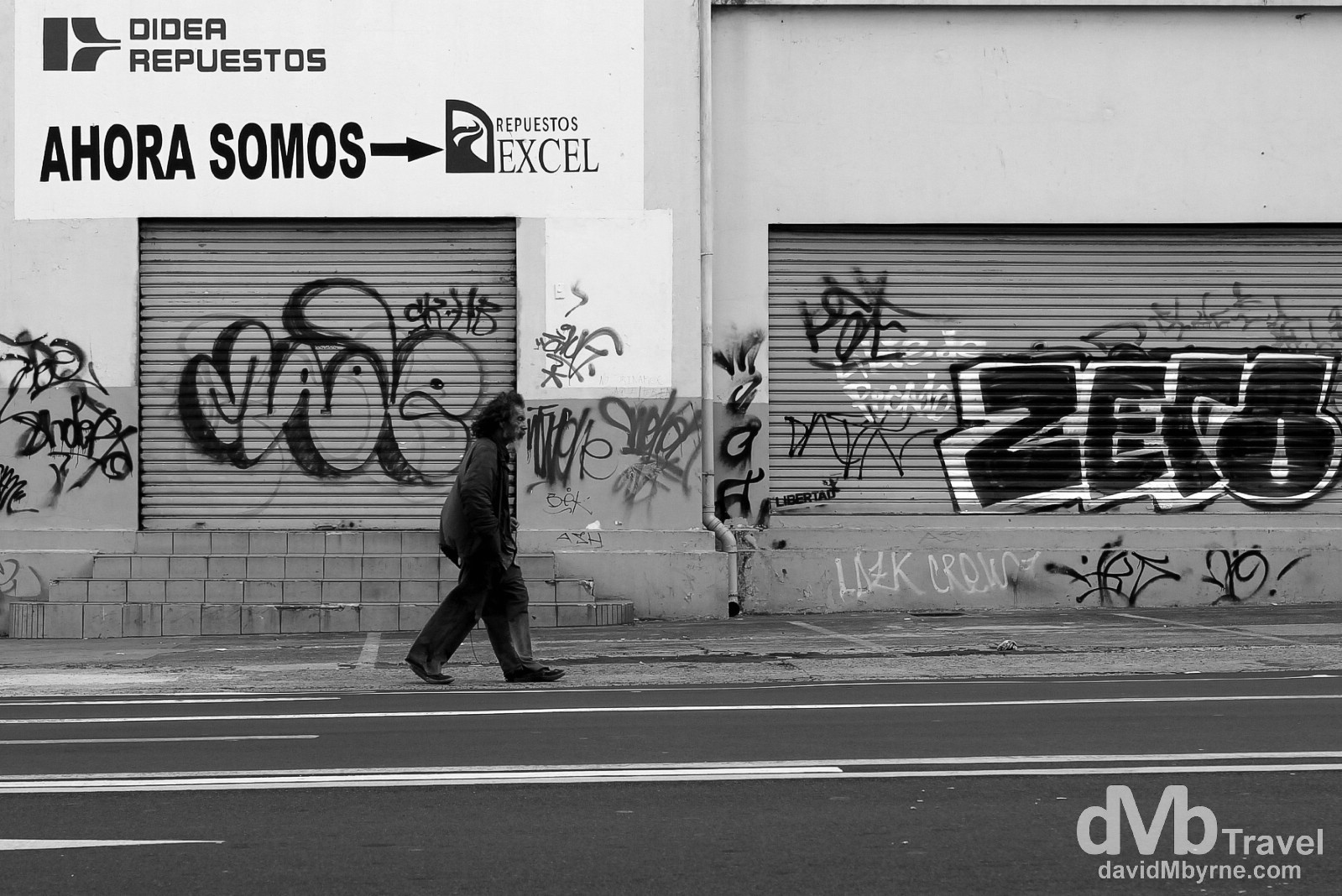
On the streets of San Salvador, El Salvador, Central America. June 3rd 2013
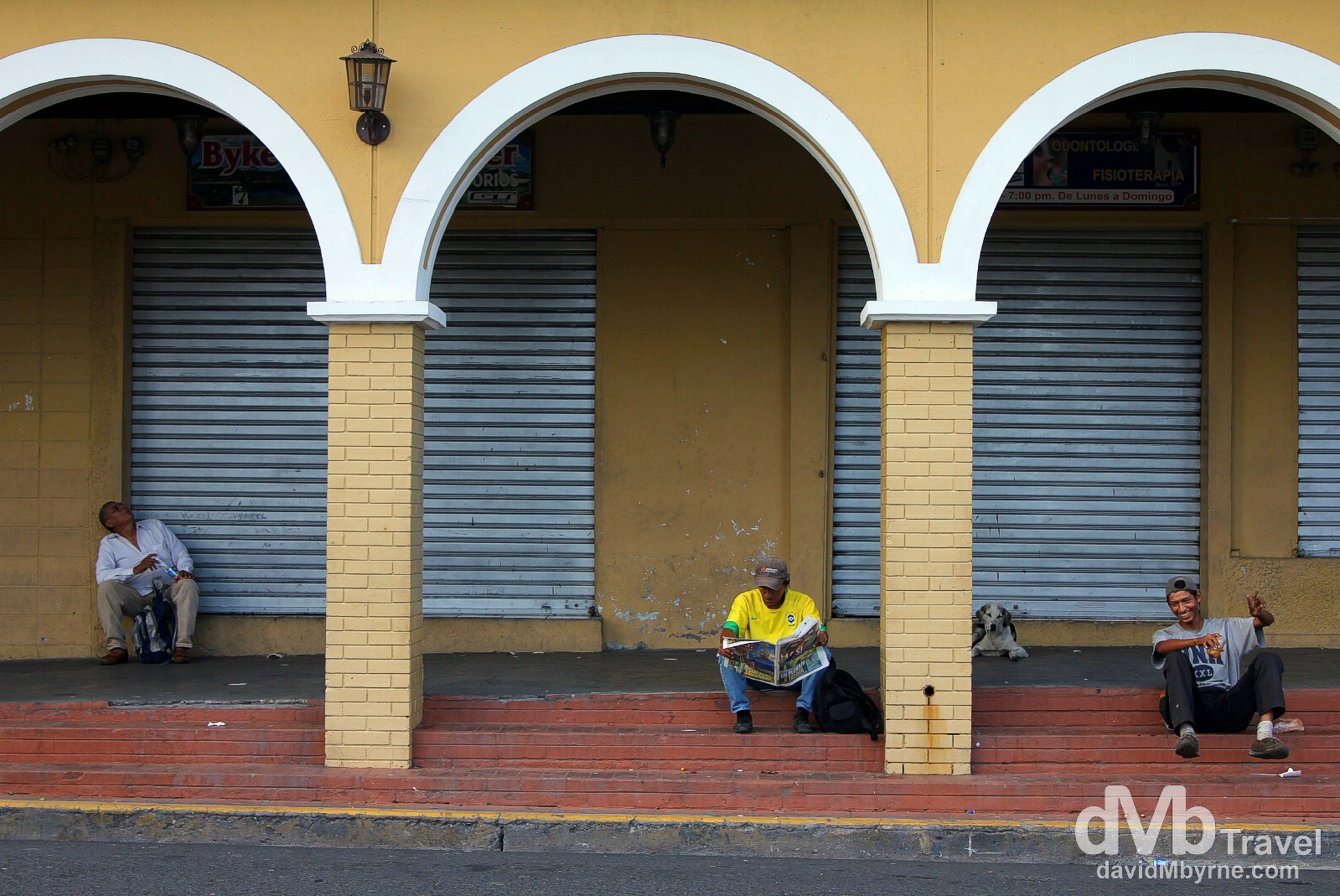
On the streets of San Salvador, El Salvador, Central America. June 3rd 2013.
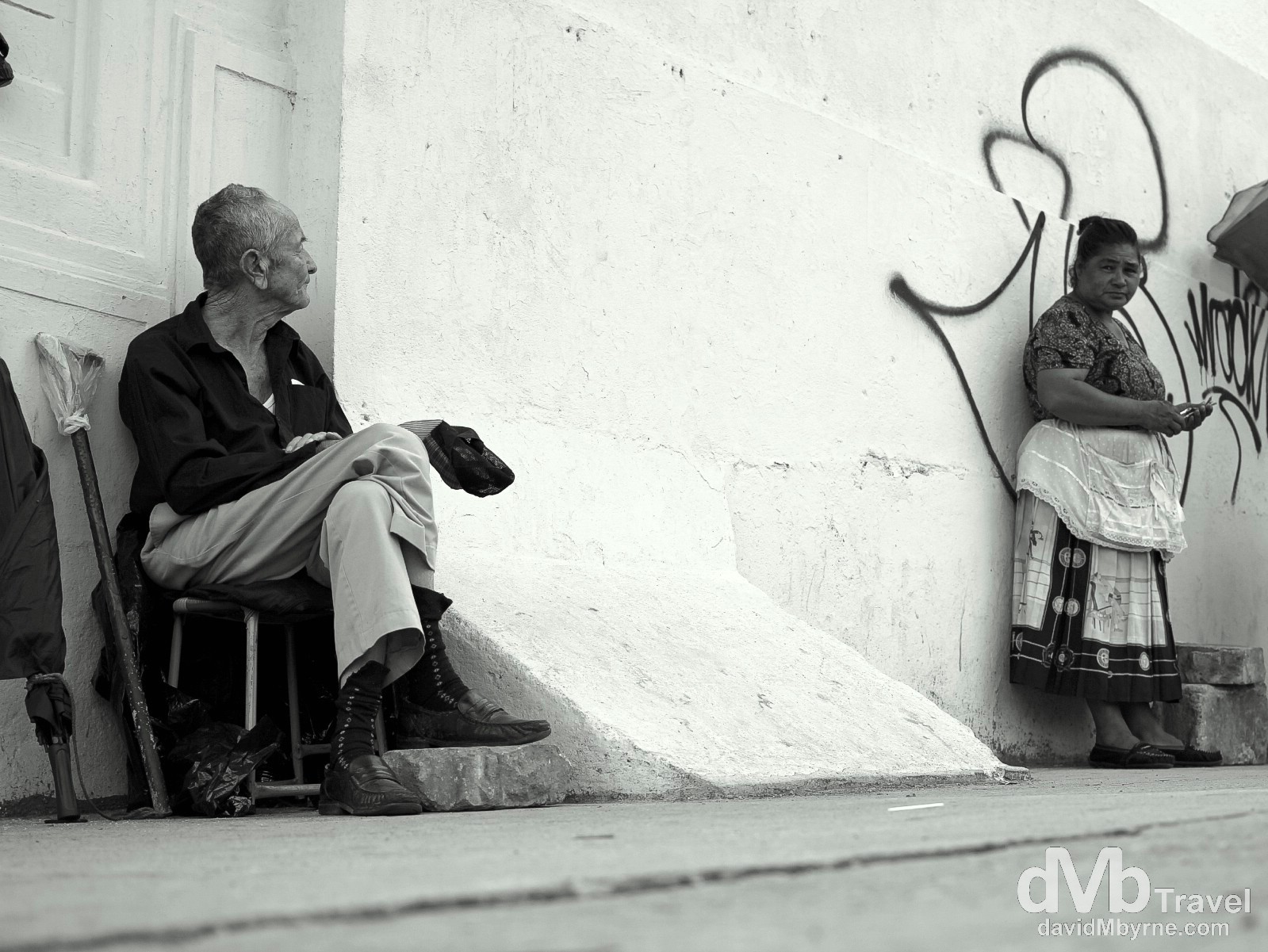
On the streets of San Salvador, El Salvador, Central America. June 3rd 2013.
Reading Up
I didn’t spend all day trying to be conspicuous taking pictures on the streets of San Salvador. I found myself reading up on El Salvador. That was fun, too. History wise it didn’t take long, especially considering El Salvador’s history pretty much mirrors that of most other countries in the region – under Spanish Colonial rule from the early 16th to 19th centuries, gained independence in 1821, and became independent in 1840 following the dissolution of the United Provinces of Central America. I’ve also learnt that the country is still scared from the 1980s Civil War (long over by now); that although it’s the smallest of the 7 Central American countries, it’s also the most densely populated (kind of makes sense really); that it has the highest minimum wage in Central America (but still 30% of the 6.5 million population live below the poverty line); that coffee dominates the economy; that a quarter of the population lives outside the country, mostly in the US; & that it’s the only Central American country without a Caribbean coastline. Oh, and they also use the US dollar as their currency. Having been here a week I really knew a lot of that already but at least reading it gave me something else to do ahead of tomorrow’s departure.
______________________________________________________

